Nvidia ION represented by Acer Aspire Revolution
Six months ago, I tested the Acer Aspire Revolution nettop, but for current reasons, I just decided to present this material to the public. Nettops have begun to actively appear in Russia, so I think it is important to submit a product from Acer to the habrozhitel court.
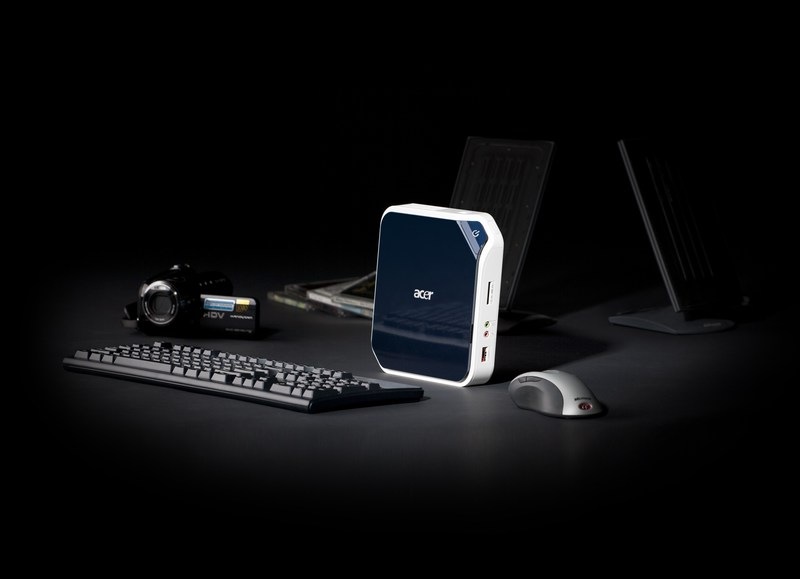
Thus, the platform’s creators see a new generation of IT-technologies - the minimum in size and the maximum in functionality.
Intel with the release of the Nvidia ION platform in advance dubbed it dead and not cost-effective. But after a close acquaintance with the platform, I completely rejected the position of Intel.
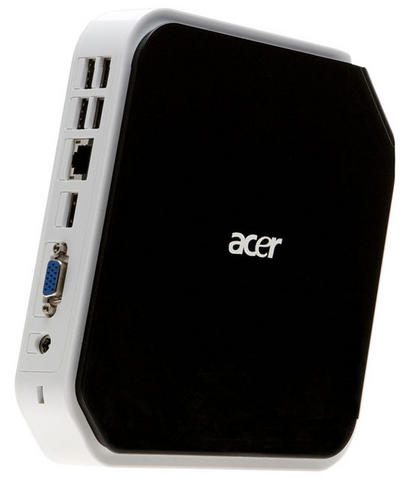
One of the first companies to support Nvidia was Acer, the company that took the leading position in notebook turnover. The company has won customers an excellent price / performance ratio. Pulling up quality as well, Acer took the lead. And now Acer was one of the first to introduce its nettop - Acer Revolution. Acer Revolution comes in three variants that differ in cost and configuration:
1) Intel Atom N230 with NVIDIA ION, 8GB SSD HDD, 1GB RAM, Wi-Fi, Linux, Keyboard and Mouse, VESA mount.
2) Intel Atom N230 with NVIDIA ION 160GB HDD, 2GB RAM, Wi-Fi, Vista Home Premium, Keyboard and Mouse, VESA mount.
3) Intel Atom N230 with NVIDIA ION, 160GB HDD, 2GB RAM, Wi-Fi, Vista Home Premium, Keyboard and Mouse, VESA mount, Gaming Pack.
We will get to know a product with a 160 Gb hard drive, but without a Gaming Pack. I note that ION received the second generation, the Intel Atom 330 processor gave a new life to the platform. (When buying ION, I advise you to pay attention to products with such a processor) The

compact box includes everything that seemed unthinkable: 6 USB ports, a card reader, connectors for speaker and microphone connections, eSata, HDMI, Lan, VGA. By installing a nettop on the stand, we get the overall dimensions of 180x180x30 mm.
Well, here is what CPU-Z shows:

Next, I’ll present photos from the system’s BIOS, surprisingly the BIOS turned out to be more like a computer than a laptop, which made me even more happy:
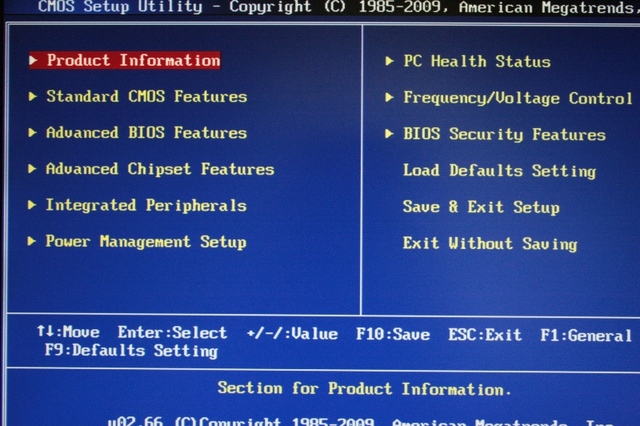

This tab displays all the information about the system, the processor, its clock speed , the amount of RAM.



Here, Acer engineers left us the ability to enable / disable Intel proprietary technologies.

And here the built-in controllers are turned on / off.
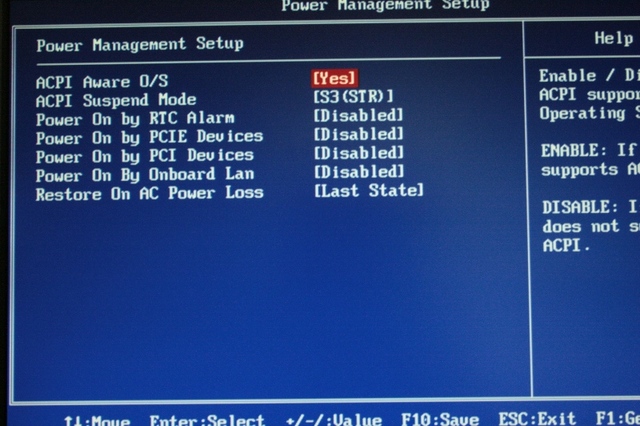

The temperature for the dimensions of the case is within normal limits, and it makes noise at the same time barely.
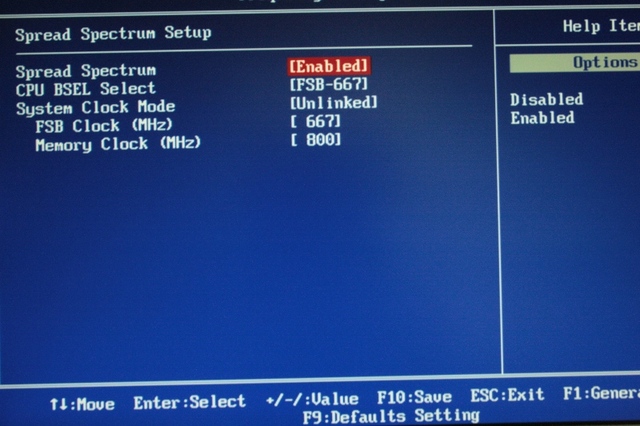
Judging by the last tab of the BIOS presented, we see that this "tiny toy" can also be dispersed. Acer engineers prepared two operating modes: default with a frequency of the system bus 533 MHz and more productive - 667 MHz, which corresponds to the frequencies of 1600 MHz and 2000 MHz. Separately, I note that the processor and RAM can be overclocked asynchronously, which in such conditions is more plus than minus. This is convenient because timings cannot be changed from the BIOS, and MemSet does not work from under Windows. For example, having crossed the frequency of 800 MHz - already at 802 MHz the timings switch from CL5 to CL6, which leads to a decrease in performance.
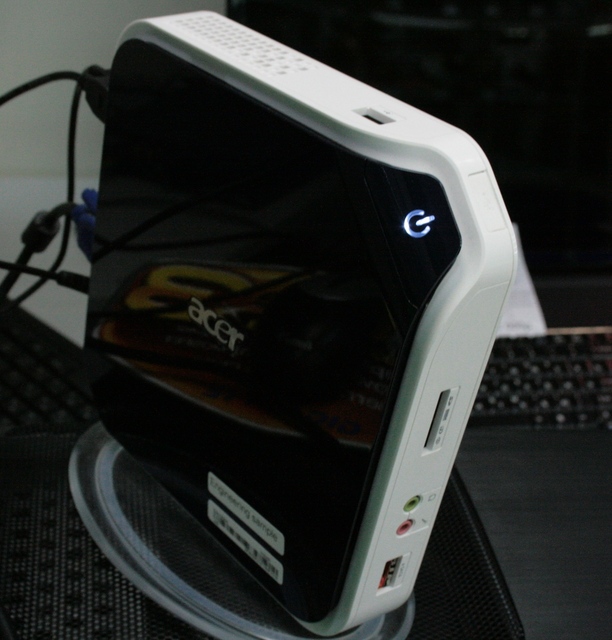
The platform was tested in two modes with a processor defaulted to 1.6 GHz and overclocked to 2.0 GhHz. The maximum overclock was 2060 MHz: http://valid.canardpc.com/show_oc.php?id=578892
Test results:
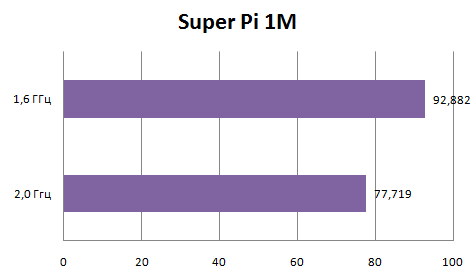
Super Pi1M is a single-threaded test, depending on the bundle of the processor frequency + memory. Adequately reflects productivity growth with increasing clock speed. The smaller the result, the better.
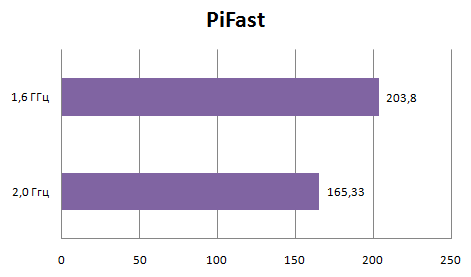
It is very far from records, but, nevertheless, the performance situation does not change from the change in the "count" of the number Pi. The smaller the result, the better.
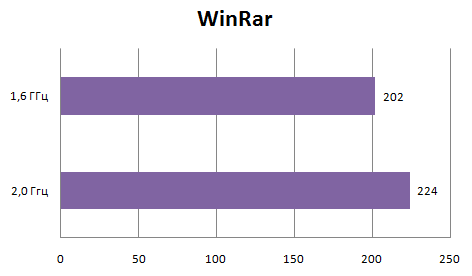
Again, the numbers are very small for a modern PC, but not Crysis to play on it.
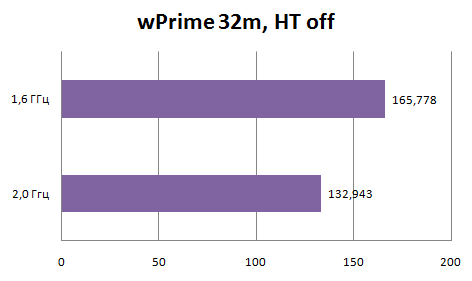

And wPrime demonstrates how Intel Hyper-Threading Technology works. We are all still used to seeing this technology in the top segment of the Intel Core I7, but here the difference from turning on / off is 40 seconds. However, do not forget that with increasing processor performance, this delta will decrease. But it is on processors such as Atom that Hyper-Threading technology is absolutely necessary.
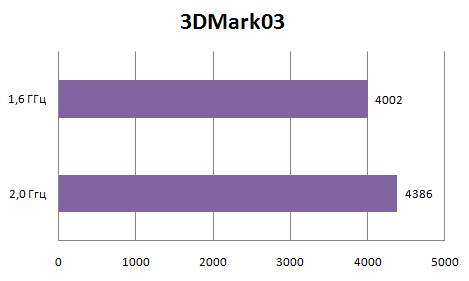
The good old 3DMark03 is one of those tests that did not succumb to the influence of the processor, but how a real graphic test depends on the video subsystem. The built-in Nvidia 9400GT card is enough for watching movies, simple photo processing, but no more. You won’t be able to play games with good settings. And the difference in the diagram due to the first test is “airplanes”, which is the only processor dependent.
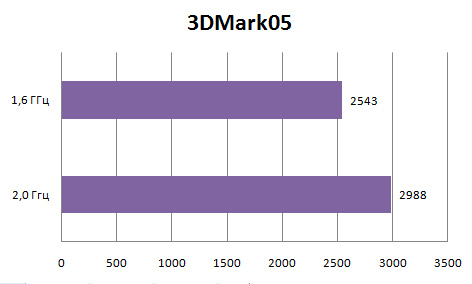
In the fifth brand, we get about 450 parrots from overclocking the processor.

In the sixth mark there are only 100 parrots, but on the other hand 13 percent from above are not superfluous.
Well, the blue test Everest - default and acceleration, respectively.
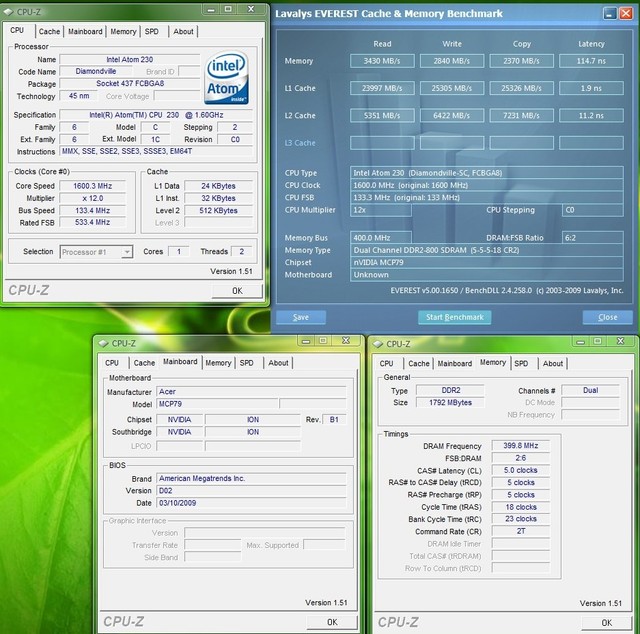
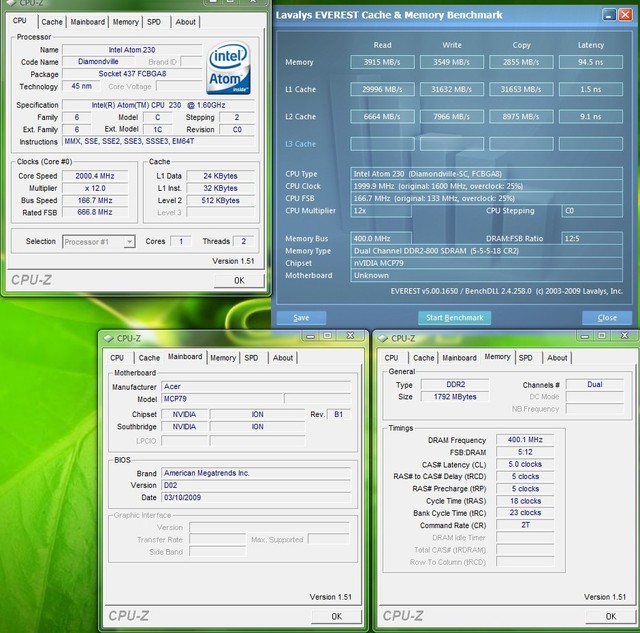
The read / write speed of the memory increases in proportion to the clock frequency.
Conclusion
Impressions from getting to know ION are only positive, the platform turned out to be very successful, and quite efficient for the Intel Atom processor. Acer Revo is the quality standard that other manufacturers of nettops based on Nvidia ION need to equal. I hope that in the near future we will see something competitively capable from other manufacturers. But a small minus of the whole platform is only that the variety of user components is not surprising. You can only play with memory and hard drive, as well as processors.

Thus, the platform’s creators see a new generation of IT-technologies - the minimum in size and the maximum in functionality.
Intel with the release of the Nvidia ION platform in advance dubbed it dead and not cost-effective. But after a close acquaintance with the platform, I completely rejected the position of Intel.

One of the first companies to support Nvidia was Acer, the company that took the leading position in notebook turnover. The company has won customers an excellent price / performance ratio. Pulling up quality as well, Acer took the lead. And now Acer was one of the first to introduce its nettop - Acer Revolution. Acer Revolution comes in three variants that differ in cost and configuration:
1) Intel Atom N230 with NVIDIA ION, 8GB SSD HDD, 1GB RAM, Wi-Fi, Linux, Keyboard and Mouse, VESA mount.
2) Intel Atom N230 with NVIDIA ION 160GB HDD, 2GB RAM, Wi-Fi, Vista Home Premium, Keyboard and Mouse, VESA mount.
3) Intel Atom N230 with NVIDIA ION, 160GB HDD, 2GB RAM, Wi-Fi, Vista Home Premium, Keyboard and Mouse, VESA mount, Gaming Pack.
We will get to know a product with a 160 Gb hard drive, but without a Gaming Pack. I note that ION received the second generation, the Intel Atom 330 processor gave a new life to the platform. (When buying ION, I advise you to pay attention to products with such a processor) The

compact box includes everything that seemed unthinkable: 6 USB ports, a card reader, connectors for speaker and microphone connections, eSata, HDMI, Lan, VGA. By installing a nettop on the stand, we get the overall dimensions of 180x180x30 mm.
Well, here is what CPU-Z shows:

Next, I’ll present photos from the system’s BIOS, surprisingly the BIOS turned out to be more like a computer than a laptop, which made me even more happy:


This tab displays all the information about the system, the processor, its clock speed , the amount of RAM.



Here, Acer engineers left us the ability to enable / disable Intel proprietary technologies.

And here the built-in controllers are turned on / off.


The temperature for the dimensions of the case is within normal limits, and it makes noise at the same time barely.

Judging by the last tab of the BIOS presented, we see that this "tiny toy" can also be dispersed. Acer engineers prepared two operating modes: default with a frequency of the system bus 533 MHz and more productive - 667 MHz, which corresponds to the frequencies of 1600 MHz and 2000 MHz. Separately, I note that the processor and RAM can be overclocked asynchronously, which in such conditions is more plus than minus. This is convenient because timings cannot be changed from the BIOS, and MemSet does not work from under Windows. For example, having crossed the frequency of 800 MHz - already at 802 MHz the timings switch from CL5 to CL6, which leads to a decrease in performance.

The platform was tested in two modes with a processor defaulted to 1.6 GHz and overclocked to 2.0 GhHz. The maximum overclock was 2060 MHz: http://valid.canardpc.com/show_oc.php?id=578892
Test results:

Super Pi1M is a single-threaded test, depending on the bundle of the processor frequency + memory. Adequately reflects productivity growth with increasing clock speed. The smaller the result, the better.

It is very far from records, but, nevertheless, the performance situation does not change from the change in the "count" of the number Pi. The smaller the result, the better.

Again, the numbers are very small for a modern PC, but not Crysis to play on it.


And wPrime demonstrates how Intel Hyper-Threading Technology works. We are all still used to seeing this technology in the top segment of the Intel Core I7, but here the difference from turning on / off is 40 seconds. However, do not forget that with increasing processor performance, this delta will decrease. But it is on processors such as Atom that Hyper-Threading technology is absolutely necessary.

The good old 3DMark03 is one of those tests that did not succumb to the influence of the processor, but how a real graphic test depends on the video subsystem. The built-in Nvidia 9400GT card is enough for watching movies, simple photo processing, but no more. You won’t be able to play games with good settings. And the difference in the diagram due to the first test is “airplanes”, which is the only processor dependent.

In the fifth brand, we get about 450 parrots from overclocking the processor.

In the sixth mark there are only 100 parrots, but on the other hand 13 percent from above are not superfluous.
Well, the blue test Everest - default and acceleration, respectively.


The read / write speed of the memory increases in proportion to the clock frequency.
Conclusion
Impressions from getting to know ION are only positive, the platform turned out to be very successful, and quite efficient for the Intel Atom processor. Acer Revo is the quality standard that other manufacturers of nettops based on Nvidia ION need to equal. I hope that in the near future we will see something competitively capable from other manufacturers. But a small minus of the whole platform is only that the variety of user components is not surprising. You can only play with memory and hard drive, as well as processors.
